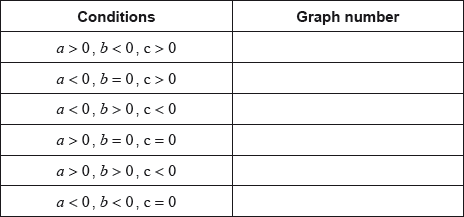| Date | November Example question | Marks available | 2 | Reference code | EXN.3.AHL.TZ0.1 |
| Level | Additional Higher Level | Paper | Paper 3 | Time zone | Time zone 0 |
| Command term | Show that | Question number | 1 | Adapted from | N/A |
Question
An estate manager is responsible for stocking a small lake with fish. He begins by introducing fish into the lake and monitors their population growth to determine the likely carrying capacity of the lake.
After one year an accurate assessment of the number of fish in the lake is taken and it is found to be .
Let be the number of fish years after the fish have been introduced to the lake.
Initially it is assumed that the rate of increase of will be constant.
When the estate manager again decides to estimate the number of fish in the lake. To do this he first catches fish and marks them, so they can be recognized if caught again. These fish are then released back into the lake. A few days later he catches another fish, releasing each fish after it has been checked, and finds of them are marked.
Let be the number of marked fish caught in the second sample, where is considered to be distributed as . Assume the number of fish in the lake is .
The estate manager decides that he needs bounds for the total number of fish in the lake.
The estate manager feels confident that the proportion of marked fish in the lake will be within standard deviations of the proportion of marked fish in the sample and decides these will form the upper and lower bounds of his estimate.
The estate manager now believes the population of fish will follow the logistic model where is the carrying capacity and .
The estate manager would like to know if the population of fish in the lake will eventually reach .
Use this model to predict the number of fish in the lake when .
Assuming the proportion of marked fish in the second sample is equal to the proportion of marked fish in the lake, show that the estate manager will estimate there are now fish in the lake.
Write down the value of and the value of .
State an assumption that is being made for to be considered as following a binomial distribution.
Show that an estimate for is .
Hence show that the variance of the proportion of marked fish in the sample, , is .
Taking the value for the variance given in (d) (ii) as a good approximation for the true variance, find the upper and lower bounds for the proportion of marked fish in the lake.
Hence find upper and lower bounds for the number of fish in the lake when .
Given this result, comment on the validity of the linear model used in part (a).
Assuming a carrying capacity of use the given values of and to calculate the parameters and .
Use these parameters to calculate the value of predicted by this model.
Comment on the likelihood of the fish population reaching .
Markscheme
* This sample question was produced by experienced DP mathematics senior examiners to aid teachers in preparing for external assessment in the new MAA course. There may be minor differences in formatting compared to formal exam papers.
M1
A1
[2 marks]
M1A1
AG
[2 marks]
A1A1
[2 marks]
Any valid reason for example: R1
Marked fish are randomly distributed, so constant.
Each fish caught is independent of previous fish caught
[1 mark]
M1
A1
AG
[2 marks]
M1A1
AG
[2 marks]
(M1)
and A1
[2 marks]
M1
Lower bound upper bound A1
[2 marks]
Linear model prediction falls outside this range so unlikely to be a good model R1A1
[2 marks]
M1
A1
M1
(M1)
A1
[5 marks]
M1A1
Note: Accept any answer that rounds to .
[2 marks]
This is much higher than the calculated upper bound for so the rate of growth of the fish is unlikely to be sufficient to reach a carrying capacity of . M1R1
[2 marks]



